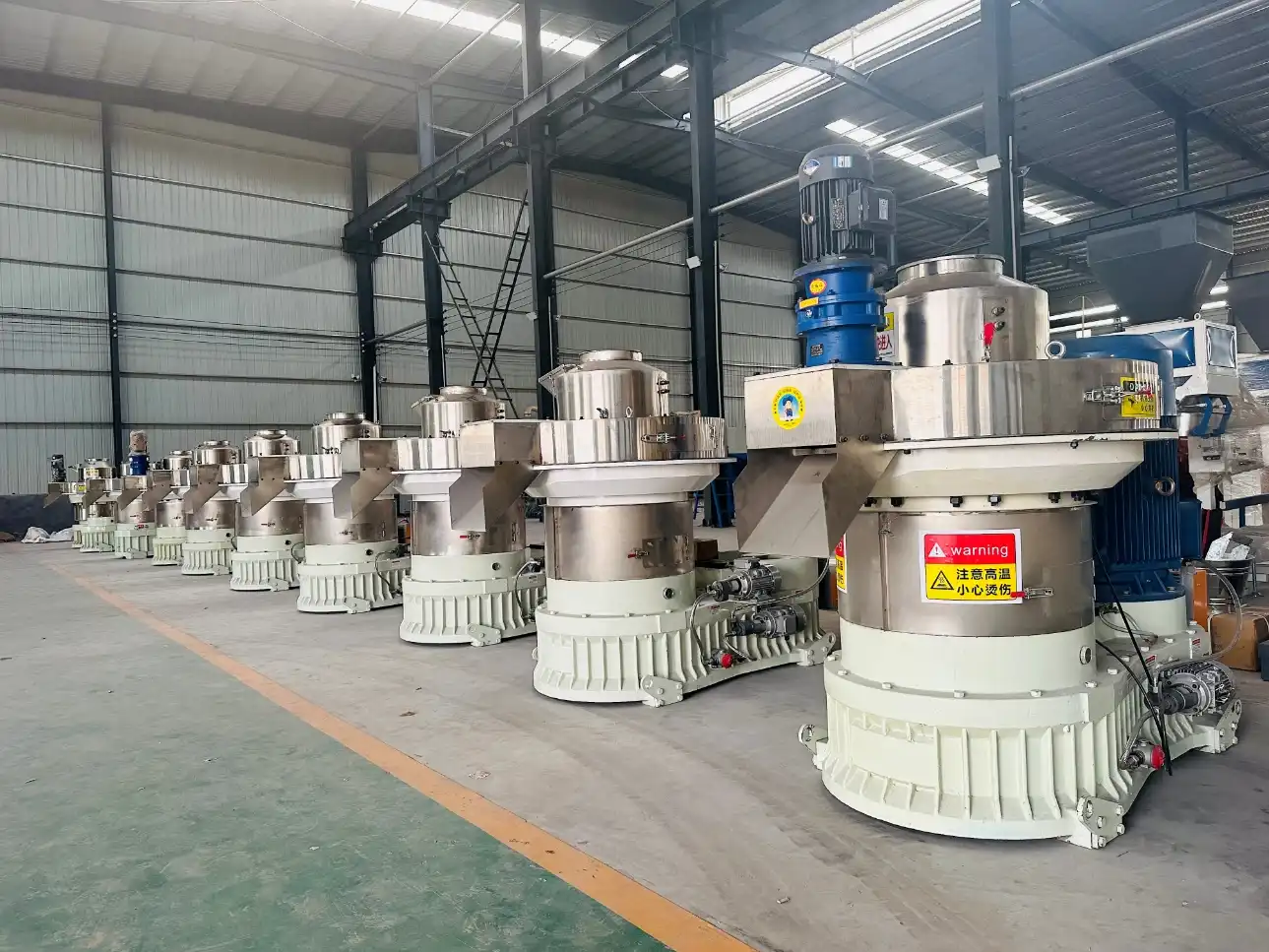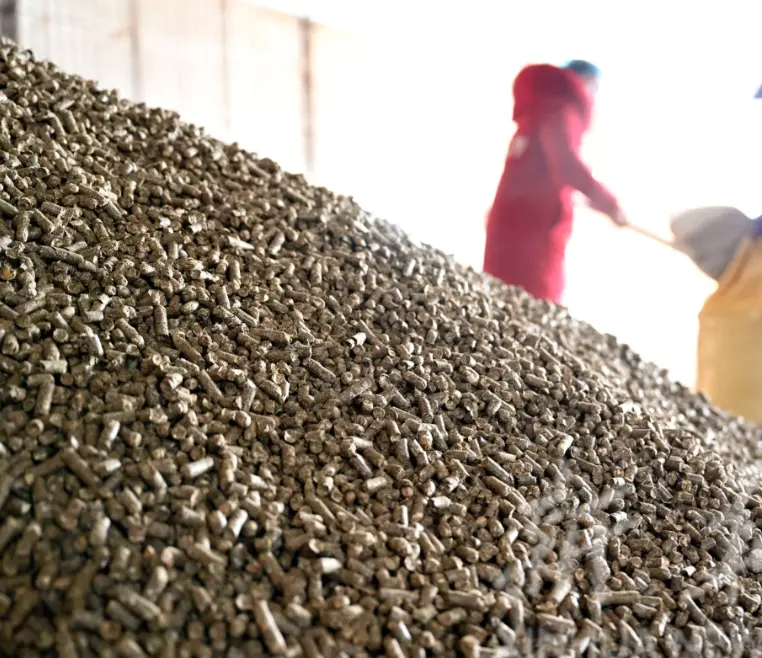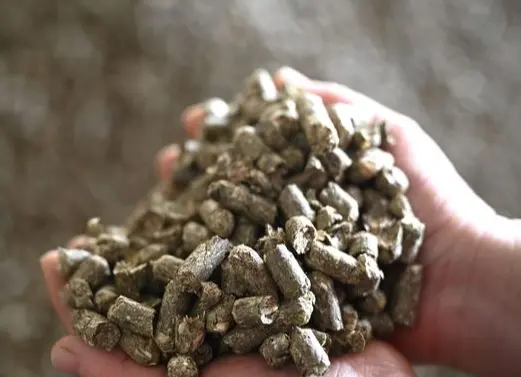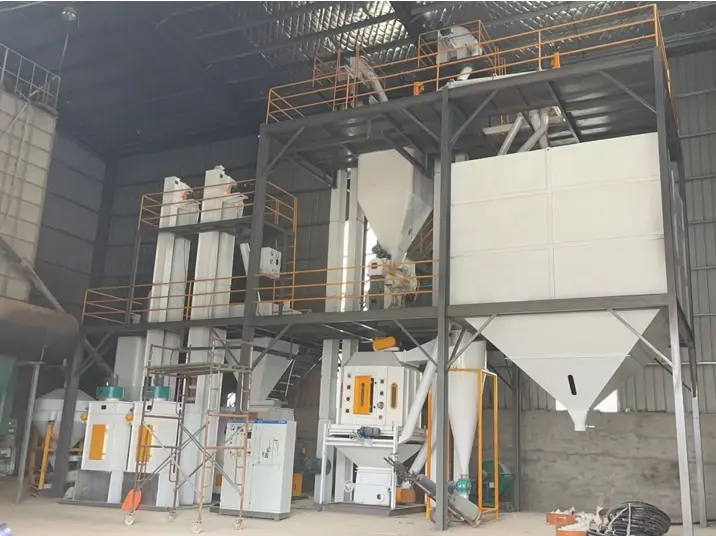In the pursuit of efficiency and sustainability in modern agriculture, the efficient and environmentally sound management of crop residues, such as straw and stalks, remains a critical challenge. Traditional pellet production models are often hampered by fixed locations, costly logistics, and high energy consumption, making it difficult to service vast agricultural areas.Self-Propelled Pelletizer: Mobile Feed/Biomass Pellet Mill
However, a technological breakthrough is fundamentally changing this landscape: the advent of the Self-Propelled Straw Pelletizer.

I. A Revolutionary Innovation: The Mobile Pellet Factory on the Farm
Traditional pellet mills are stationary. They require a multi-step process: harvesting, baling, loading, transporting the raw materials to a fixed facility, followed by crushing, drying, and pressing. This sequence is not only time-consuming and labor-intensive but also involves significant logistics costs and risks of secondary pollution.
The arrival of the Self-Propelled Straw Pelletizer signals the start of a new epoch. True to its name, this machine is a genuine “Mobile Pellet Processing Plant.” Equipped with robust mobility, it can drive directly into the fields, executing a seamless one-stop operation that includes straw collection, crushing, densification, and final pellet output.
Key Advantages:
- Unrestricted by Location: Whether operating in the expansive wheat fields of the north or the sugarcane plantations of the south (processing sugarcane leaves), pellet production can commence wherever the machine can reach.
- Doubled Operational Efficiency: By eliminating the tedious steps of raw material storage, loading/unloading, and multiple transports, the machine significantly boosts the overall efficiency of biomass valorization.
- Real-time Processing: Straw is processed into pellets directly in the field, mitigating the risks associated with open-air stacking and burning, thereby contributing significantly to environmental protection.
-

Straw Harvesting and Pelletizing Machine (6)
II. All-in-One Functionality: Meeting Diverse Biomass Pelletizing Needs
The machine’s powerful adaptability is a core competitive advantage. It is not designed for a single crop but is capable of processing a vast array of biomass raw materials, fulfilling diverse pellet production requirements.
The wide range of suitable raw materials includes, but is not limited to:
- Crop Straws: Wheat straw, bean straw, corn stalk, cotton stalk, peanut straw, rapeseed straw, rice straw, etc.
- Agricultural Byproducts: Rice husk, sawdust, wheat husk, cotton boll husk, sugarcane leaves, and various other biomass materials.
This versatility allows the machine to flexibly adapt to varying raw material supplies across different seasons and regions. This is especially crucial for areas with large quantities of bulky, traditionally hard-to-handle materials like sugarcane leaves and rice straw, offering an efficient and convenient solution to transform waste into high-value products.

III. Value Transformation: Feed, Fuel, and Everything in Between
The value of the Self-Propelled Straw Pelletizer extends beyond the breadth of its raw material processing; it lies in the diversity of its pellet outputs. It can produce various types of pellets based on different materials and customer demands, thereby maximizing the generated value.
- A Cradle for High-Quality Feed Pellets: For crop straws rich in nutrients, such as wheat straw and bean straw, the machine can directly process them into high-density feed pellets that are easy to store and transport. This provides the livestock industry with a stable and affordable source of roughage, greatly enhancing feed utilization and palatability. Owning one machine is equivalent to having a mobile Feed Pellet Mill.
- A Producer of Clean Energy: For high-calorific materials like sawdust, rice husks, and sugarcane leaves, the machine can compress them into high-density biomass combustion pellets (fuel pellets). This renewable, clean energy source is widely used in industrial boilers and domestic heating, serving as an effective substitute for highly polluting fuels such as coal. With this machine, you gain the functionality of a Wood Pellet Mill or Biomass Pellet Mill.
This all-in-one, multi-functional design ensures that investors can adjust production types based on market demands, thereby securing a strong return on investment.

IV. Owning a Mobile Pellet Factory: The One-Stop Solution
Investing in a Self-Propelled Straw Pelletizer is essentially acquiring a mobile pellet processing factory. This integrated, one-stop operating model resolves all the pain points of the traditional approach:
| Traditional Pain Point | Self-Propelled Pelletizer Solution |
| High Transport Costs | Machine operates directly in the field; zero raw material transportation. |
| Open-Air Storage Risks | Real-time collection and processing; eliminates storage risks. |
| Complex Multi-Equipment Workflow | Collection, crushing, and densification integrated; one machine does it all. |
| High Facility Costs | No need for a fixed factory building; the field is the production site. |
For businesses, cooperatives, or large farm owners looking to enter the biomass energy or feed production sectors, this machine dramatically simplifies the supply chain, achieving “zero-distance conversion” from field waste to high-value commodity.

V. Core Value Summary: The Perfect Combination of Pelletizing Machinery
The Self-Propelled Straw Pelletizer is not just a machine; it is a Multi-functional Pelletizer that integrates the capabilities of a Feed Pellet Mill, a Wood Pellet Mill, and a Biomass Pellet Mill. It streamlines the complex process of straw handling into: Drive into Field -> Collect -> Pelletize -> Output.
Performance and parameter table of self-propelled straw combined harvesting granulator/11XZR (S/Y) 1.0A |
|||
| Machine size | L7350MM* | Standard operating comprehensive fuel consumption | 25L/h |
| W2540MM* | |||
| H3 480MM | |||
| Walking drive type | Hydraulic front wheel drive, rear steering | Standard operating efficiency of fuel RL and feed SL pellets | RL:1.0T/h SL:1.3T/h |
| Engine brand and model | Yuchai YCA08300-T301 | Raw material moisture content requirements for fuel particles RL | 10%≤RL≤30% |
| Engine power | 221KW/300 horsepower | Moisture content requirements for feed pellets SL | 10%≤ry≤25% |
| Driving speed | Infinitely variable speed, up to 40KM/H | Fuel RL and feed SL particle density | RL≥1.0g/cm3 SL≥0.7g/cm3 |
| Unloaded weight of the whole machine | <8500KG | Conventional soil content of fuel RL and feed SL particles | RL≤5% SL ≤ 3% |
| Loading capacity of finished product bin of this machine | ≈4.0M³ | Moisture content of fuel RL and feed SL granules | RL≤15% SL≤20% |
| Horizontal/longitudinal track | 2500MM/3200MM | RL combustion value of corn stalk fuel particles | RL>3200CAL |
| Pick-up width | 2200MM | Finished particle output method and time | Non-stop conveying, time is about 5 minutes |
| Tyre specification | 500mm-60mm-22.5mm 400mm-60mm-15.5mm |
Ground clearance | 385mm |
| Global operational efficiency | 3-5/hour | Feeding amount kg/s | 0.55 |
Especially in today’s growing biomass pellet market, this machine provides the most economical and highly efficient means of processing challenging, low-density materials like sugarcane leaves. Choosing the Self-Propelled Pelletizer is choosing a future of high efficiency, low cost, environmental sustainability, and comprehensive functionality for agricultural resource valorization.





